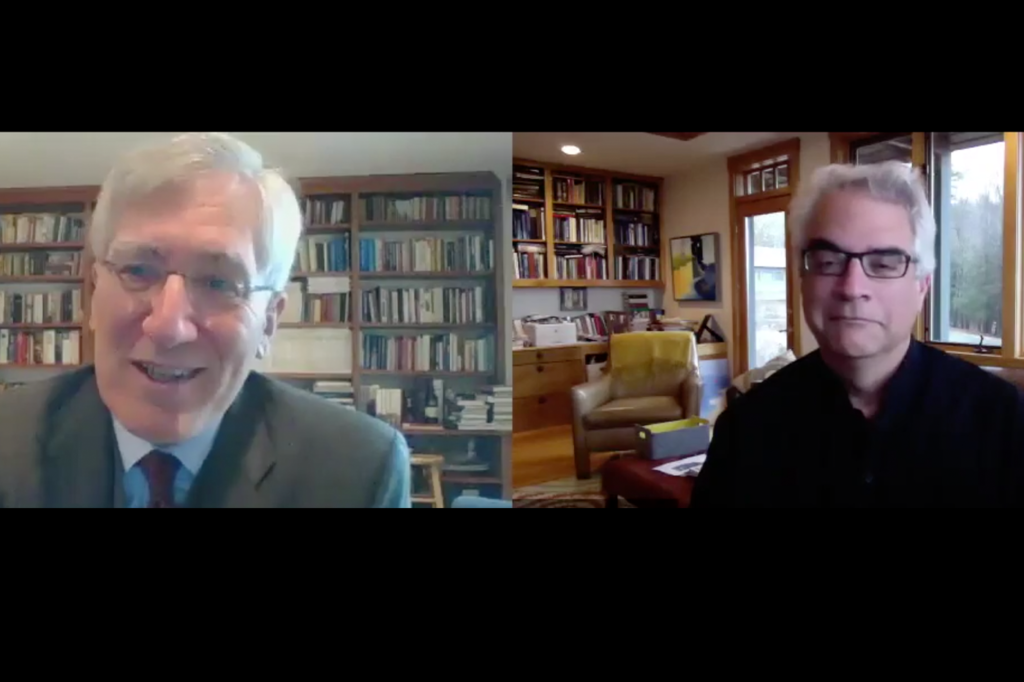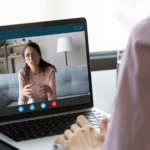Robert George: Could you begin by giving us a summary of what we know from the past about pandemics?
Nicholas Christakis: We’re experiencing something that’s very unusual in the history and life of our species: the introduction of a new pathogen that has entered our species and will circulate widely among us. As near as we can tell, this coronavirus bears a strong similarity to viruses that had been circulating in bats. It’s a bit odd that bat viruses so often cause us problems. There’s been some speculation that their immune system is very similar to ours. The virus first adapted to being transmissible in bats, and by some time in November in the Wuhan region of China was pre-adapted to the human immune system. By December, there were many people getting sick and dying in Wuhan by means we still don’t fully understand.
In Wuhan, a young doctor by the name of Wenliang Li noticed that many, many cases of an unusual kind of pneumonia were coming to his hospital. He shared his observations on social media with some of his physician and nurse colleagues. This was seen as inappropriate by local authorities, and he was called in, accused of rumor-mongering, and silenced. Of course, he was right. He eventually was infected, as many healthcare workers have been, and died of the condition. He’s become somewhat of a hero in China as a result.
By the middle of January, it was quite clear what was happening. One of China’s leading experts who had dealt with a SARS-1 epidemic in 2003 went on a mission to Wuhan and saw what was happening. By late January, the Chinese government had begun to respond extremely forcefully, and a national quarantine of sorts was imposed. On January 24 or 25, I was contacted by some Chinese colleagues of mine to do some collaborative research. As a result, I began to really focus my attention and became aware that this disease was going to be pandemic, that it was a very serious threat, and that it would likely be an historic event.
Start your day with Public Discourse
Sign up and get our daily essays sent straight to your inbox.In February, we began to follow the research being published in China and then in Italy. Italy had the misfortune of two people who had business exchanges with China landing in Lombardy, and one of those two people resulted in a super-spreading event. About forty-three people were infected by that person.
But if you look around the world—whether it’s Wuhan or Lombardy or Qom in Iran or New York City—the epidemic follows a very similar trajectory. We know from genetic studies where the strains of virus in particular cities came from. So, for example and off the top of my head, let’s say that the outbreak in New York came from the Italian strain and the outbreak in Seattle from the Chinese strain. This means that we know that this pathogen was already in circulation in Seattle by the middle of January, well before any one person had zeroed in that there was an outbreak. Before we knew it, the germ was spreading. This, incidentally, speaks to one of the reasons why closing borders typically is not an effective way to fight the virus. By the time the human beings become aware of the pandemic and try to close borders, the germ is already loose.
In January, the germ came to the United States. At that point, Italy and Iran were beginning to collapse from the pathogen. They had mass graves in Qom because so many people died so fast. We saw something similar in Lombardy. And there’s no reason to imagine things won’t be similar in the United States. On the one hand, we have lower population density and we’re richer. But there are other things that are no different, or worse, in our country.
Robert George: Let me ask about the different strains of the virus. Are they of the same lethality?
Nicholas Christakis: The virus has not mutated in a way that would make it more or less lethal. Typically viruses become less lethal; they don’t want to kill us, from a Darwinian point of view. It’s better for them that you walk around and transmit it to many other people. If it kills you rapidly, then you don’t transmit it. The flu kills about one in 1,000 infected people. Most people, or at least half, have no symptoms or mild symptoms if they’re infected by COVID-19. So the case fatality ratio for COVID-19 is about 0.5 to 1 percent, which means it’s between five and ten times as deadly as the flu.
By contrast, SARS-1 had a case fatality ratio of about 10 percent, at least ten times as fatal at COVID-19. It was very deadly. That was too high to sustain a pandemic; it just burned out. It would kill its victims before they could transmit it. So what we have in the case of COVID-19 is a pathogen that has an intermediate reproductive rate (Re): it’s neither too transmissible nor too non-transmissible, and it has intermediate lethality. These parameters remind me of the 1957 pandemic, which was an influenza pathogen that also originated in China and that had a similar lethality. That pandemic killed 110,000 Americans at a time when we had a population of about 150 million. That would be 250,000 Americans today.
Robert George: Did we do social distancing or shutdown the economy in 1957?
Nicholas Christakis: Yes, there was some of that. But there were a couple things that were different about 1957. As background, in 1918, we did social distancing and the banning of public gatherings and the school closures and all of that stuff in spades. In 1957, polio was raging as well, so there was some social distancing already going on. Also, the media environment was very different at the time. I don’t think people were as aware of what was happening in nearby regions in ’57 so as to try to get ahead of the curve.
It is a very standard thing to implement social distancing. Thucydides describes it in the plague that afflicted Athens in 430 BC. It’s not rocket science. There are two kinds of ways that we can respond to pandemics. One is so-called pharmaceutical interventions, drugs and vaccines, for which we don’t have any for this condition, although we hope to have some in the future. The other is so- called non-pharmaceutical interventions, of which there are two types: individual stuff—like washing your hands, self-isolating, not touching your nose and face—and collective interventions—like school closures or the governor banning public gatherings. All of these have been around forever. You can look at medieval woodcuts of how the people in European cities coped with pandemics and see them spaced out in the public squares.
This is a fundamental human experience that we’re having. It’s been described for long periods of time. It’s just we’re not used to having it.
Robert George: What can we expect the number of deaths in the United States to be, roughly?
Nicholas Christakis: I would say there’s a 99 percent chance that we will have at least 35,000 deaths, a 75 percent chance that we will have at least 50,000 deaths, a 50 percent chance that we will have at least 100,000 deaths, a 25 percent chance of 300,000 deaths, and a 5 or 2 percent chance we’ll have 1 million deaths. Part of the reason that epidemiologists are so uncertain is that this thing has only been on the planet for two or three months. We have a lot of knowledge about coronaviruses and a lot of knowledge about pandemics. But this particular pathogen jumped to humans in November.
Robert George: So would it be fair to say that if the death toll ends up being under 100,000 or more than 350,000, you will be surprised?
Nicholas Christakis: I’ll definitely be surprised if it’s under 100,000—although happy. I won’t be totally surprised if it’s above 300,000.
Robert George: Do we have any serious danger that the virus will mutate in a way that will make the situation worse?
Nicholas Christakis: That is unlikely. As I said earlier, the virus would “rather” be less lethal.
But let me talk about flattening the curve. If there will be 100,000 deaths in the United States, we’re trying to avoid having all of them occur this month. By engaging in social distancing, we flatten the curve. So maybe 100,000 deaths will still occur, but they will occur over time, which allows our healthcare system to take care of them and pushes some of the deaths into the future, by which time we may know better how to treat the condition. We could have taken it on the chin and just said, “All right, 300,000 Americans are going to die sooner or later. Let’s let them all die now and then get it over with.” But that’s inhumane and politically very difficult. And I think when those deaths started happening, people would be clamoring for action, but by then it would be too late to engage in the social distancing.
That’s what we’re doing for the first wave of COVID-19. Typically, these respiratory viruses go away in our summer and appear in the Southern Hemisphere during their winter. For various reasons, most people do not think that that will happen in this case. We may get a small break, but not a weather cure. Then, when people go back to school and return to work in the fall, you get the second wave. A third wave will also follow. Eventually, the disease will become endemic in our population, i.e. it’s going to become like the flu or the common cold—if we’re lucky. It’ll just be one of those pathogens that circulates in our species and enough of us will be immune that the pathogen cannot easily spread through us. In short, we’re at the beginning of the first wave, there is likely to be a second wave, and then the end game is we’ll get used to it.
Robert George: What can you tell us about the status of things when it comes to a) an actual vaccine and b) effective treatments? Perhaps using anti-malarial drugs or other treatments, pharmaceutical or otherwise?
Nicholas Christakis: This is not a particularly easy vaccine to develop, but I think we will be able to develop one. If I had to bet, we will have one in eighteen months, and maybe more than one by competing manufacturers. I have not done extensive research on chloroquine. I did see the studies out of China that suggested that chloroquine and zinc seemed to have some efficacy, but I haven’t seen any evidence that suggests that if you take these things prophylacticly, they have any effect or early in the course.
Robert George: But as a treatment my understanding is that New York is now treating quite a large number of people with some sort of mix of hydroxychloroquine and azithromycin and zinc. So does that mean we’ll know pretty soon whether it’s working or not?
Nicholas Christakis: No, because unfortunately we’re not doing it in a randomized control trial. I’m not prepared to make a statement on the utility of those drugs. I can say that the Chinese doctors seem to think that they were helpful, and I have a lot of confidence in frontline clinicians who are carefully observing patients. But, a lot of times, doctors have said that something works and they were wrong. It had no effect or even hurt people. It’s good to pay attention to what the doctors are telling us about their clinical observation, but I wouldn’t assume that it’s true.
Robert George: Should the public wear non-N95 masks when doing essential errands? Are bandanas and homemade masks okay?
Nicholas Christakis: In general, the answer is yes. I think we should be wearing masks.
The N95 masks that everyone talks about are quite good, but some studies say that a bandana is half as good. The other advantage of a mask is that it stops you from touching your nose and mouth.
Robert George: How trustworthy is the data from China, especially the information we are using to make policy decisions concerning infection rates, severity of illness, and mortality?
Nicholas Christakis: I think a lot of the data is reliable. The Chinese Communist Party is not a reliable source of information very often. That said, I think many of the Chinese studies are quite reliable and have now been validated by Italian studies.
Regarding the question of whether the Chinese are hiding their mortality rates, I think probably they were early in Wuhan, but, by the middle of January, they themselves had a powerful incentive for truth-telling in order to track the epidemic. Accurate reporting was essential if you’re going to combat this infection. So I do believe those numbers; plus, my lab has done some research on this that I cannot yet discuss that gives me some confidence. I know that their fatality numbers are almost certainly accurate after the initial shock in Wuhan.
Robert George: What is the appropriate exit strategy from current quarantine measures?
Nicholas Christakis: Everyone wants to know when will this end. The answer is, it will end when we are ready for it to end. When we are ready to adopt the kinds of practices that are common in South Korea and in Taiwan, where we adopt some social distancing but can test people. It will end when we have our healthcare system stabilized so that those of us that get sick can be cared for. I would happily stay at home for three months if it meant that my neighbors are not going to die.
Robert George: What is the likelihood that schools and universities are going to be able to reopen in the fall?
Nicholas Christakis: I don’t know the answer to that. It won’t surprise me if either we don’t open many schools or if we open and then close them again. That happened in 1918, by the way: the schools closed and then opened and then immediately closed again.
Robert George: What should be the criteria that we use to know when it’s reasonable and prudent to return to a normal way of life?
Nicholas Christakis: Scott Gottlieb, the former FDA director, and some colleagues just released a report from the American Enterprise Institute that I’ve skimmed. It seems very sensible and very similar to what’s being done in certain Asian countries, and certainly similar to the German plan. We have to prepare our people for the fight. They need honesty. They need to be told that sacrifices will be expected. Behaviors will have to change.
We spent a trillion dollars on this stimulus package. But I think more money needs to be targeted at our enemy, which is the virus, and at the public education that’s needed to tackle the virus. We also need personal protective equipment manufactured for our healthcare professionals beyond all imagination.
When we get all of that stuff in order, we can begin opening up parts of the country, returning to work, and following the plan. We’ll do that for a couple of years, and then we’ll return to life as normal.
Robert George: One final question: Are there any serious long-term implications for civil liberties from our country or others from epidemics in the past that we should bear in mind today?
Nicholas Christakis: I’m very worried that the pandemic will be used by far-left and far-right regimes to try to suspend civil liberties. In Hungary, the parliament suspended itself and gave Viktor Orban the right to rule by decree and imprison people for five years for rumor-mongering and passing information about about the virus. Of course, the Chinese did that too, in the beginning. It’s tempting in times of crisis to do that; I think history shows that that is very ill-advised. I do support the power of the government for quarantine. If you’re sick and you insist on going out, the police should come to your door. If you refuse to abide by a quarantine, you should go to jail. You do not have the right to infect others. But I can see no reason why we should have any desire to suspend civil liberties or acquiesce to their suspension because of a pandemic.














